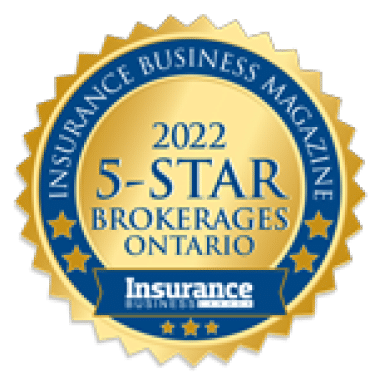Errors & Omissions (E&O) insurance is crucial for protecting professionals from lawsuits related to mistakes in their work. However, understanding how coverage limits work in E&O insurance can be challenging. Coverage limits determine the maximum amount an insurance company will pay in the event of a claim. Knowing these limits helps ensure you have adequate protection.
Having the right coverage limit is essential for safeguarding yourself against potential financial losses. If your coverage is too low, you may have to pay out of pocket for any claims exceeding the policy limit. On the other hand, higher limits offer more protection but come with higher premiums. Balancing these factors is key to choosing the best coverage.
In this article, we’ll explore the basics of E&O insurance coverage limits, what influences them, the different types, and tips for selecting the right limit. This will help you make informed decisions about your E&O insurance policy and provide peace of mind in your professional practice.
The Basics of E&O Insurance Coverage Limits
Errors & Omissions (E&O) insurance coverage limits are the maximum amounts your insurance company will pay for a claim. Understanding these limits is essential to ensure you have adequate protection. Coverage limits are split into two main categories: per-claim and aggregate limits.
Per-Claim Limit: This is the maximum amount your policy will pay for a single claim. For instance, if your per-claim limit is $500,000, that’s the most your insurer will cover for any one incident.
Aggregate Limit: This is the total amount your policy will pay for all claims during the policy period, typically one year. For example, if your aggregate limit is $1 million, that’s the maximum your insurer will pay in total over the course of the year, regardless of the number of claims.
Knowing these limits helps you understand the scope of your insurance coverage. If the cost of a claim exceeds your per-claim limit, you will have to cover the difference out of pocket. Similarly, if the total amount of claims in a year surpasses your aggregate limit, you will be responsible for the extra costs. Balancing these limits according to your needs is key to effective E&O insurance.
Factors Influencing Coverage Limits in E&O Policies
Several factors can impact the coverage limits in your E&O insurance policy. Understanding these elements can help you choose the right limits for your specific situation.
- Industry Risk: High-risk industries, like real estate or financial services, often require higher coverage limits. The nature of the work can lead to more claims, increasing the need for higher coverage.
- Business Size: Larger businesses with more clients or employees may face more claims, necessitating higher limits. Smaller businesses, on the other hand, might opt for lower limits to keep premiums manageable.
- Claim History: If you have a history of multiple or severe claims, insurers may recommend or require higher coverage limits. A clean history might allow for lower limits and premiums.
- Client Contracts: Some clients may require certain coverage limits as part of their contracts. Meeting these requirements is necessary to secure the work and avoid potential legal issues.
- Legal Environment: The legal climate in your area can influence the required limits. Regions with higher litigation rates may require higher limits to ensure adequate protection.
- Business Revenue: Higher revenue businesses might need higher coverage limits to protect against larger claims. The potential financial impact of a claim increases with the size of the business.
By understanding these factors, you can better assess your E&O insurance needs. Selecting the right coverage limits ensures you are adequately protected while balancing the costs of premiums.
Types of Coverage Limits in E&O Insurance
E&O insurance policies come with different types of coverage limits. Knowing these types helps you pick a policy that meets your needs. Here are the main types of coverage limits you should be aware of:
- Per-Claim Limits: This is the amount your insurer will pay for a single claim. If a claim goes above this limit, you’ll need to pay the difference. This helps ensure that one large claim doesn’t drain your entire policy.
- Aggregate Limits: This is the total amount your insurance will cover for all claims within the policy period, usually one year. If the combined claims exceed this limit, you’re responsible for the extra costs. This type of limit protects you from multiple claims in a year.
- Defence Costs Outside Limits: Some policies cover legal defence costs outside the policy limits. This means your legal fees won’t reduce your per-claim or aggregate limits. It’s a valuable feature, as legal costs can be high.
- Defence Costs Within Limits: In these policies, legal defence costs are included within the policy limits. Any amount spent on legal fees reduces the available limit for paying claims. If legal fees are high, it might leave less for settlements.
Understanding these types of limits helps you choose the right coverage for your needs. Each type offers different levels of protection, so it’s important to select the one that best matches your business risks.
Tips for Selecting the Right Coverage Limit
Choosing the right coverage limit for your E&O insurance is crucial. Here are some practical tips to help you make an informed decision:
- Evaluate Your Risks: Understand the risks associated with your industry. High-risk professions, like real estate and financial advisory, may need higher coverage limits to protect against larger claims.
- Consider Your Business Size: Larger businesses with more clients or complex operations may require higher limits. Smaller businesses with fewer clients can opt for lower limits to save on premiums.
- Review Client Requirements: Some clients may have specific coverage limit requirements in their contracts. Make sure your policy meets these needs to avoid any issues.
- Check Past Claims History: Look at your past claims history. If you’ve had multiple claims, you might need a higher limit. A clean history could allow for lower limits.
- Consult an Insurance Broker: An experienced broker can offer valuable insights tailored to your specific needs. They help you find the right balance between coverage and cost.
- Balance Cost and Protection: Ensure your coverage limit offers adequate protection while staying within your budget. Higher limits offer more safety but come with higher premiums.
By following these tips, you can select a coverage limit that suits your business needs. It’s a balancing act between risk, cost, and the level of protection you need.
Conclusion
Understanding coverage limits in E&O insurance is key to ensuring your business is well protected. These limits determine how much your insurer will pay for claims, both individually and in total over a policy period. Factors like industry risk, business size, and client requirements play a significant role in choosing the right limits. Knowing the different types of coverage limits and following practical tips helps you make informed decisions.
Selecting the appropriate coverage limit provides peace of mind, knowing you are protected against potential financial setbacks. For tailored advice and comprehensive coverage options, reach out to Ai Insurance Organization Inc. today. Our experts are ready to help you find the best E&O insurance policy to fit your needs.
“Disclaimer: The information provided in this article is intended for illustrative purposes only and should not be considered as actual insurance advice. Our articles offer insights and general guidance on various insurance topics however, they do not substitute professional advice tailored to your specific circumstances. For expert, personalized insurance advice and solutions, please contact our licensed insurance brokers.”












